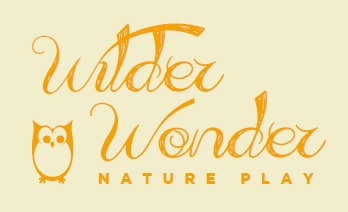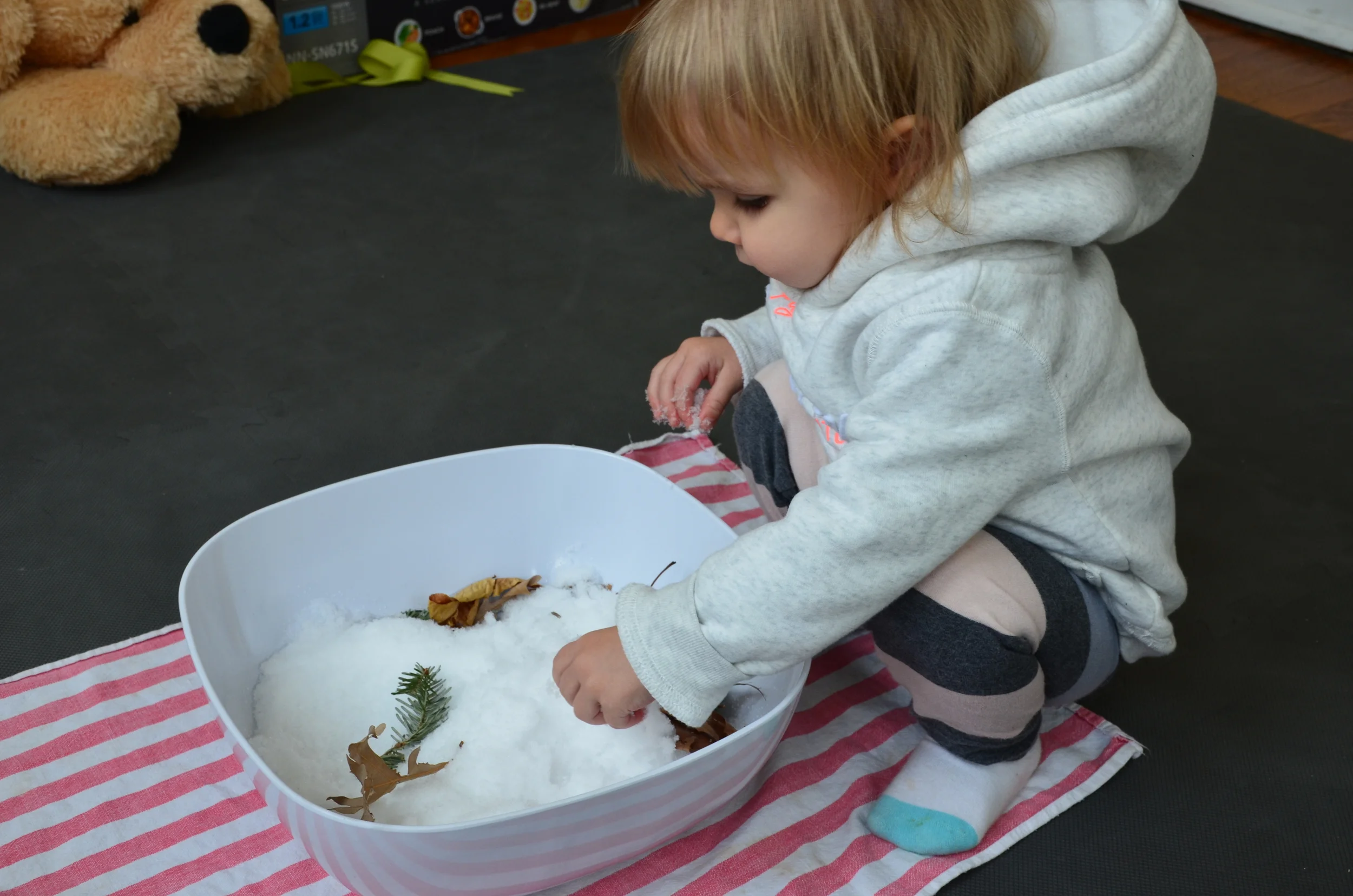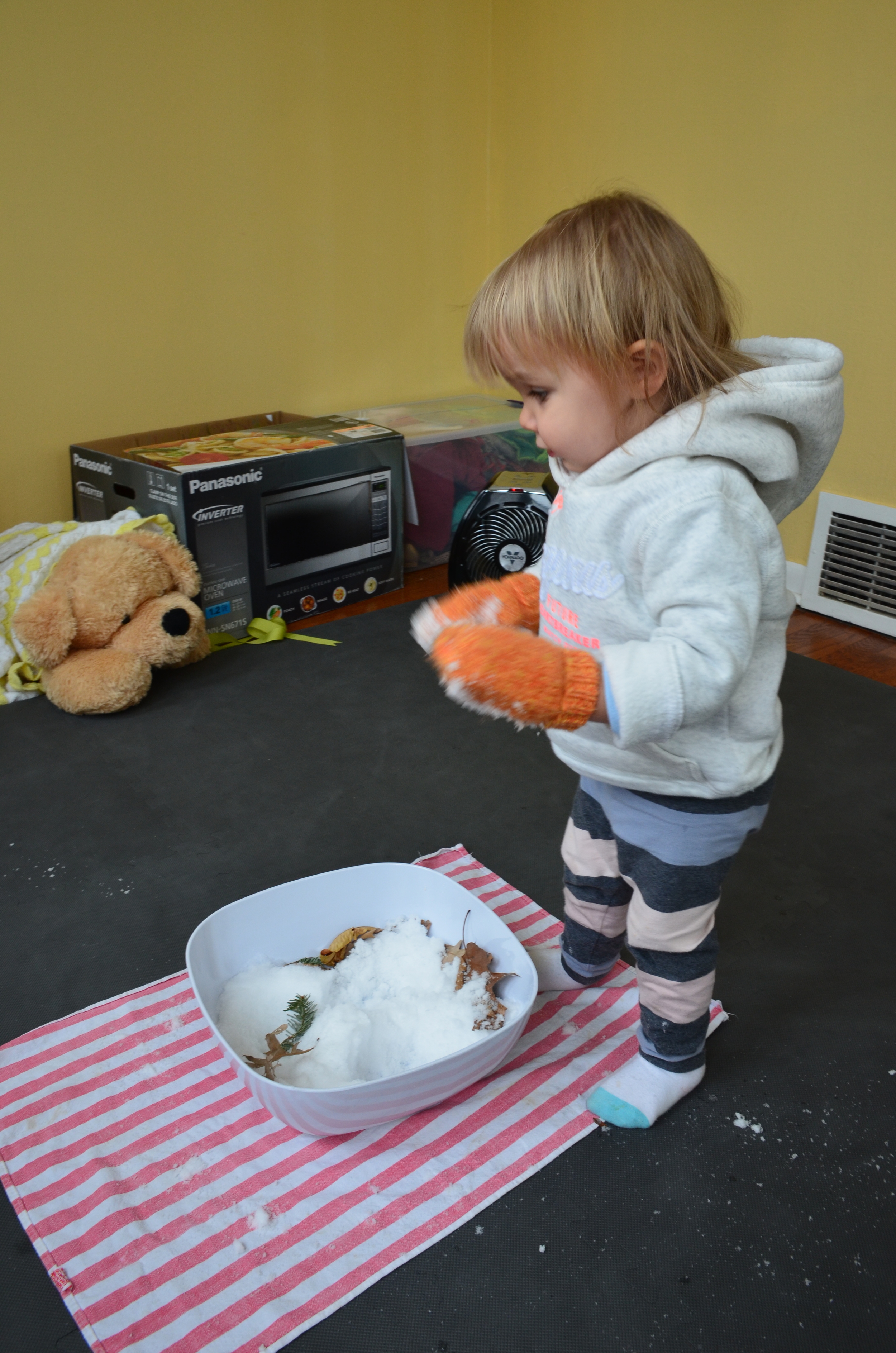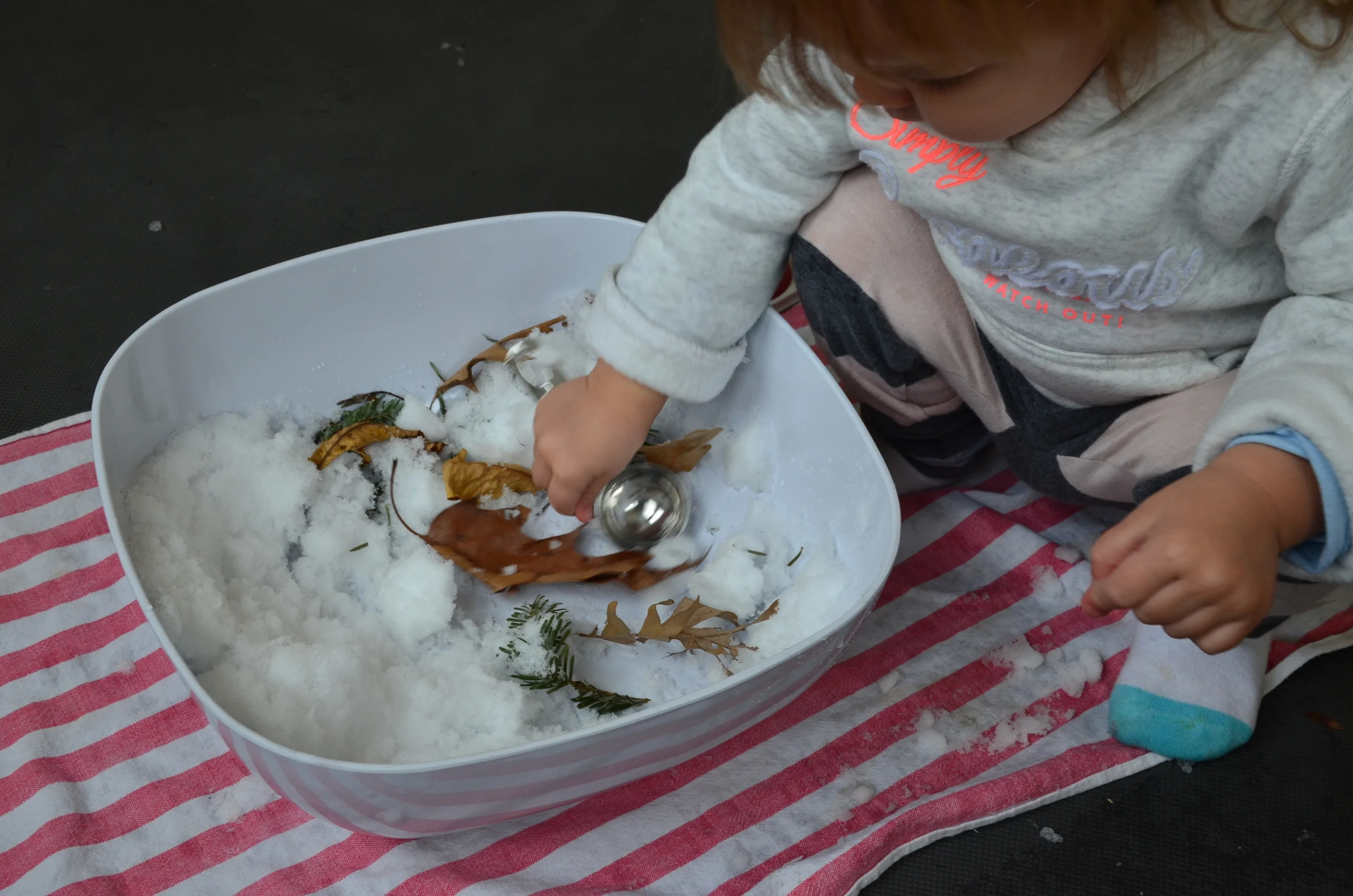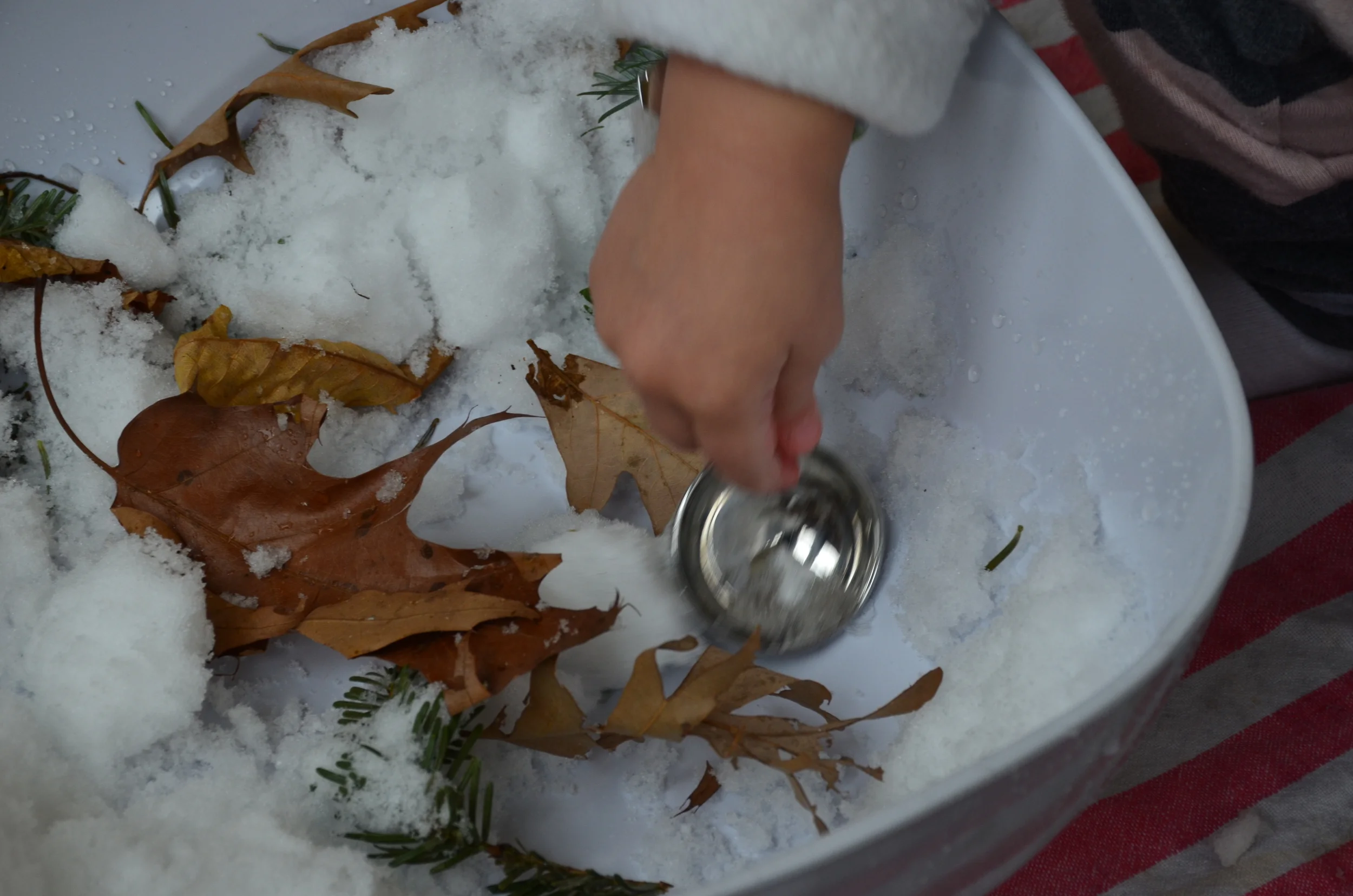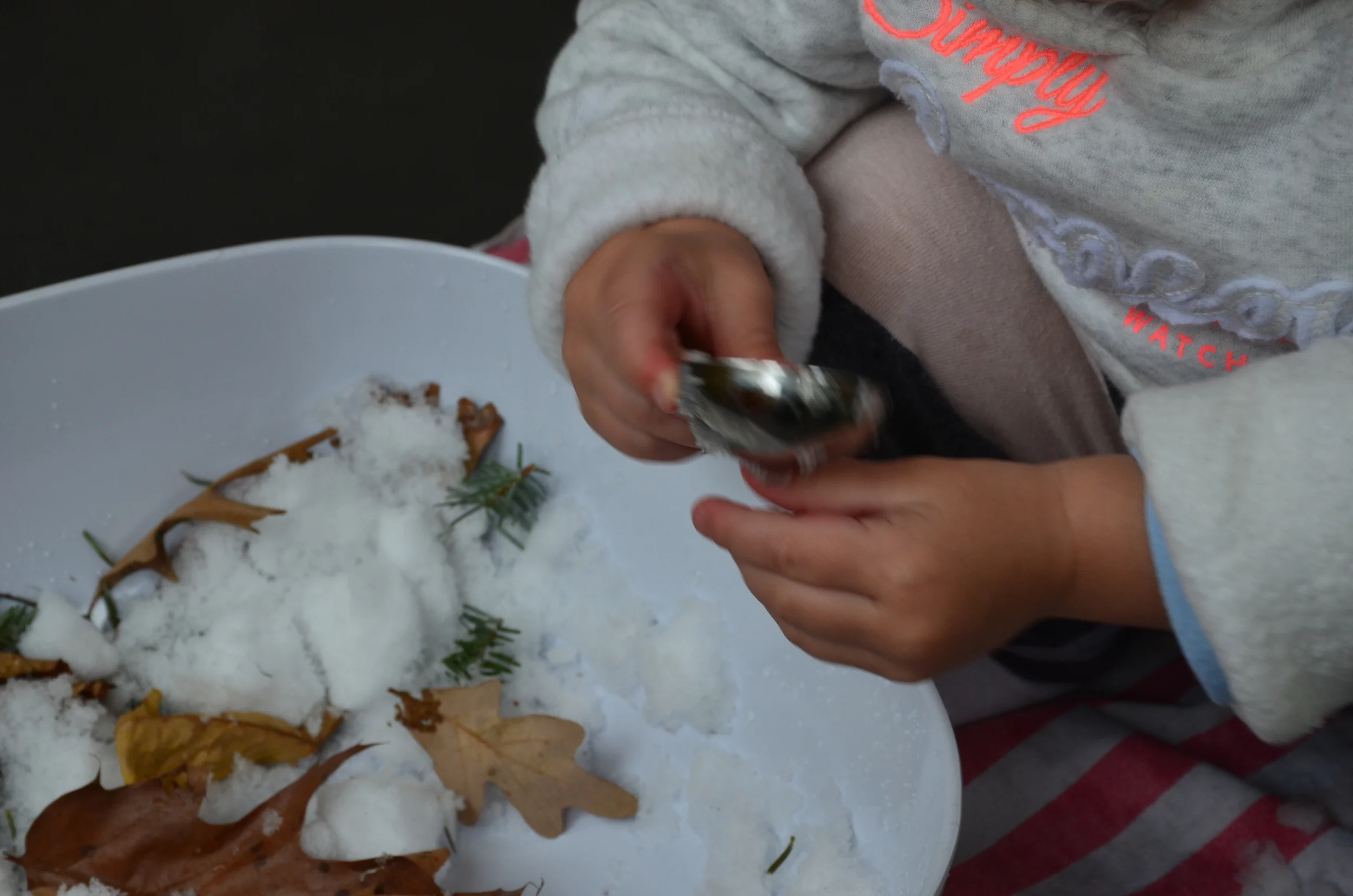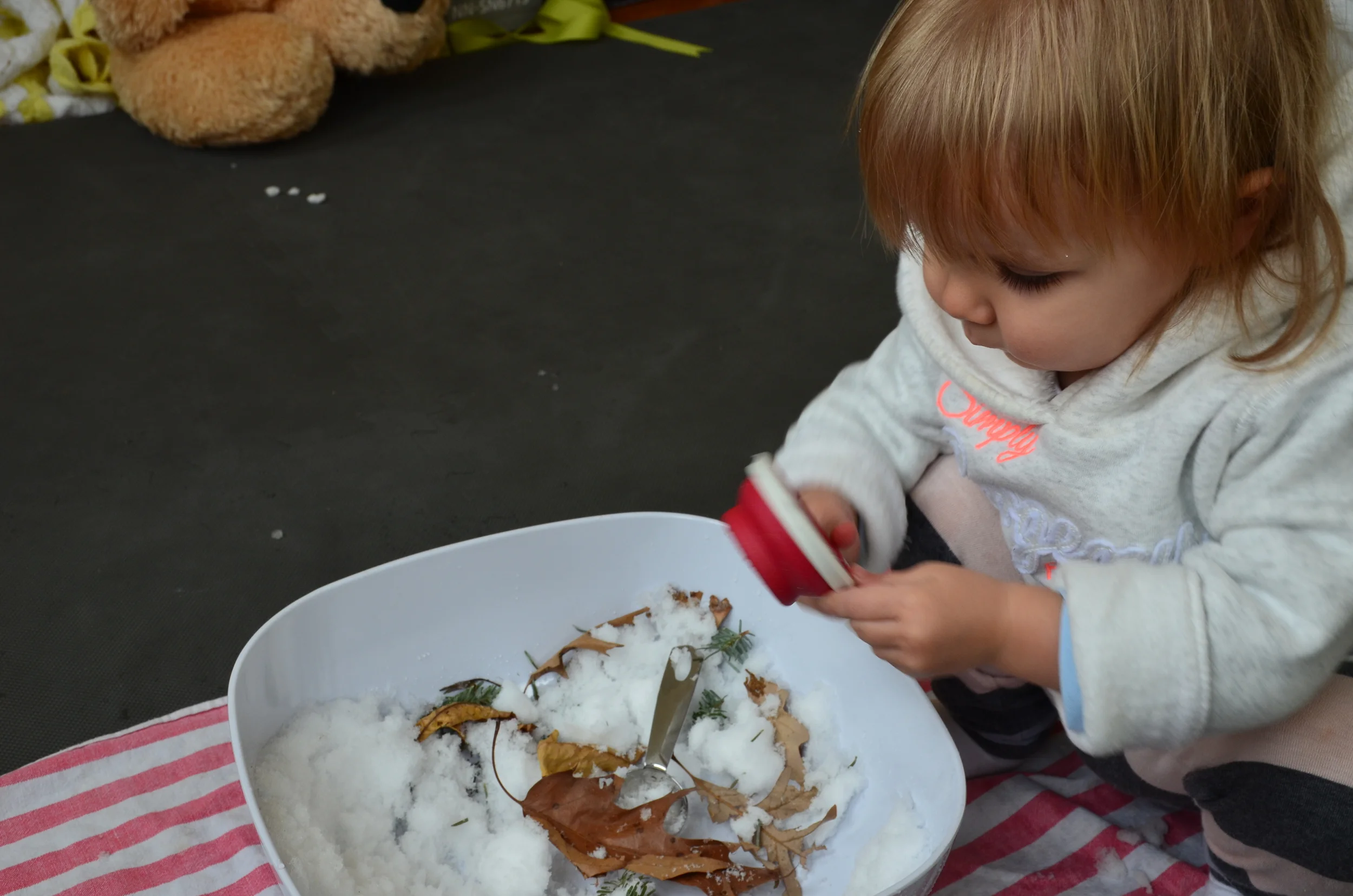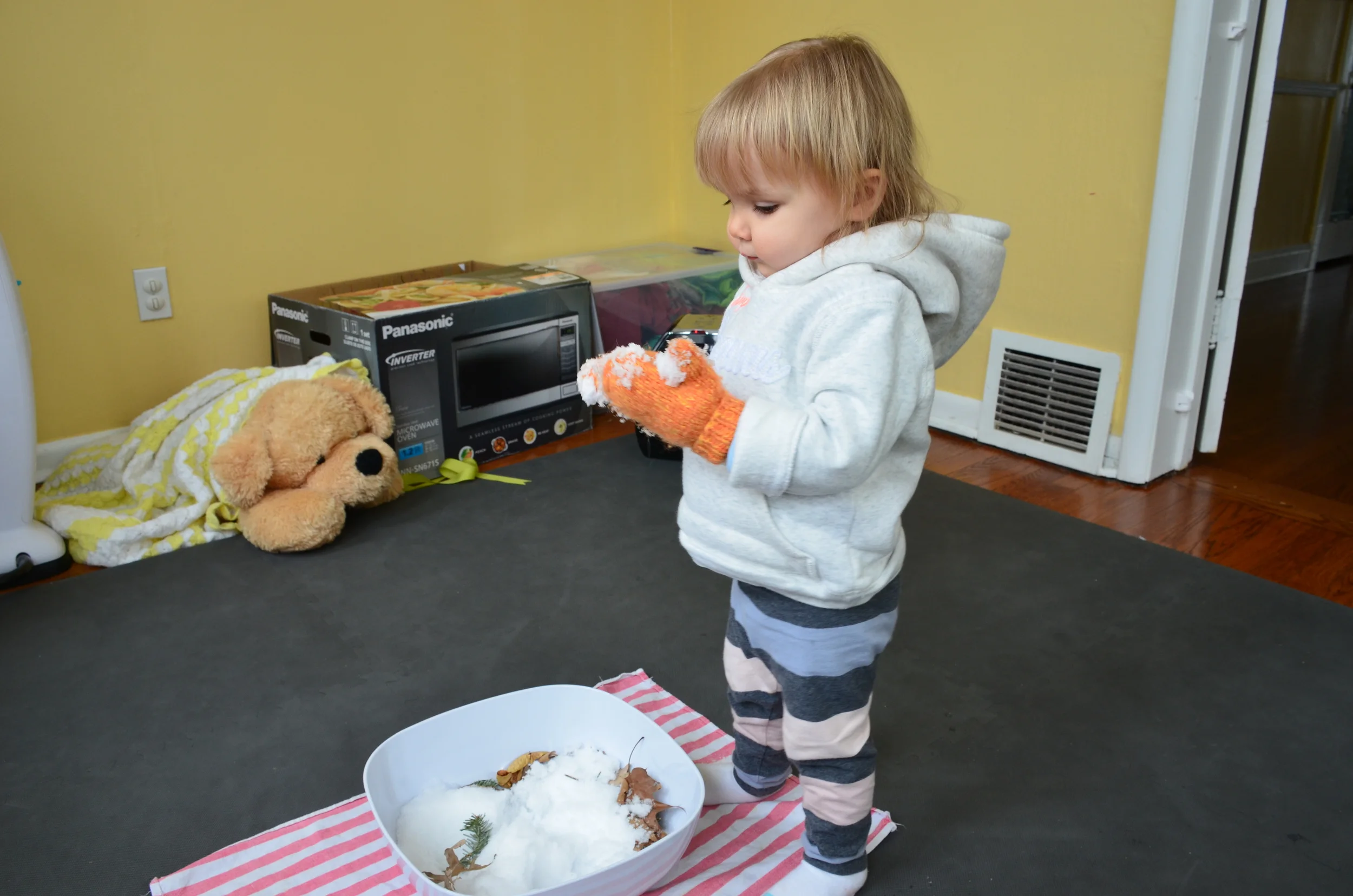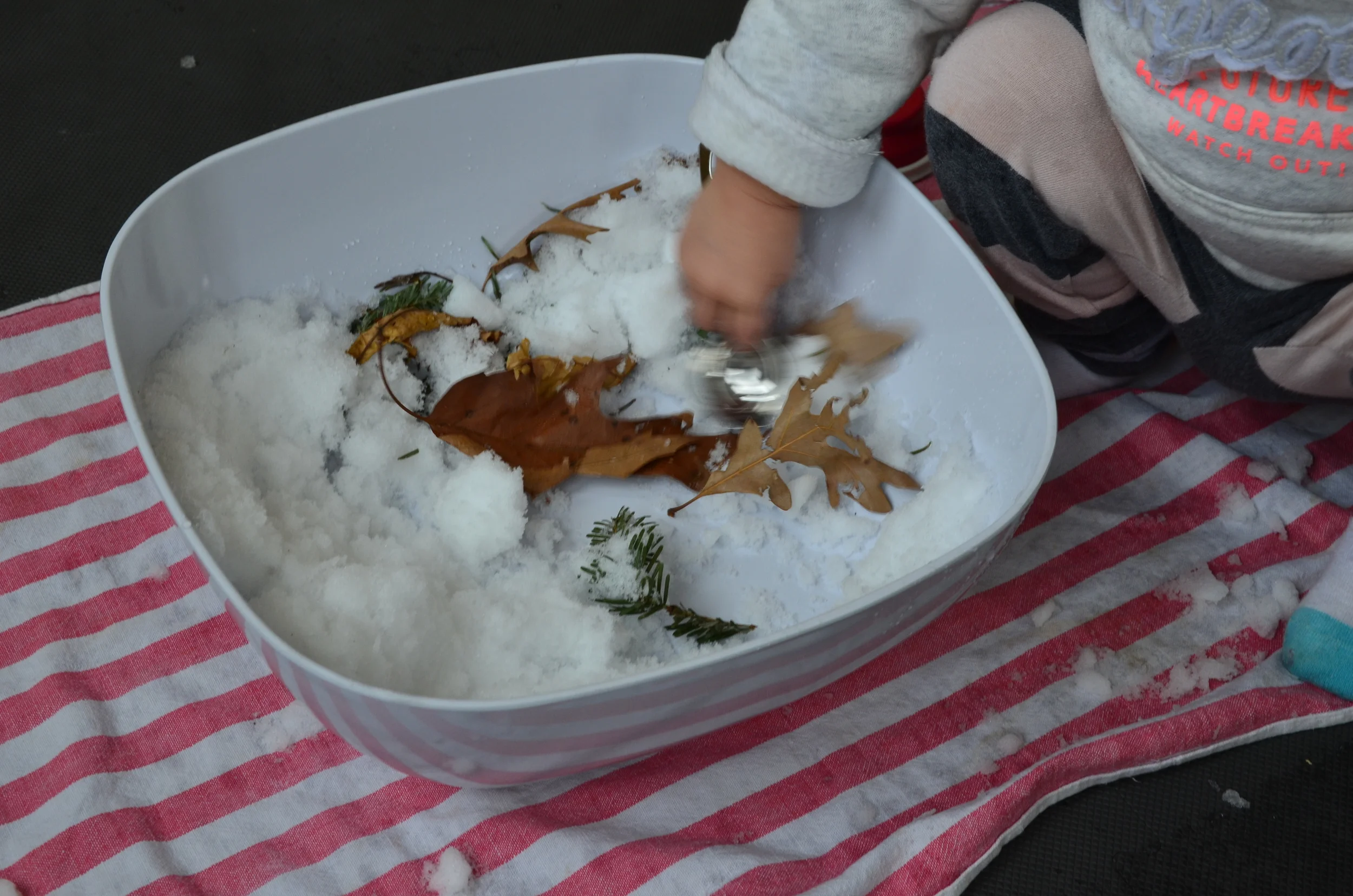Many of the theories of the cognitive development of children frame the child as a "scientist". The child creates, tests, and re-tests her "theories" and through this process, learns about the world around her. The cognitive development of preverbal children is often a challenge to study because thoughts are not often things that can be directly observed. The best we can do is study a child's behavior and make inferences about this behavior that are based in how the child is constructing understanding.
I am not a specialist in the cognitive development of children, but I wholeheartedly enjoy watching as my daughter encounters new things. I cannot help but wonder, "What is she thinking?". I had the opportunity to watch a "first encounter" last week, and like parents often do with young children, I made sure to get plenty of pictures.
We received a lot of snow last week, and with it came some very frigid temperatures. My daughter was too young to play in the snow last winter, but this year I am determined to make sure she gets some good snow play time in before the warm weather returns. Instead of spending half the day getting her bundled up to go outside, I decided to bring the snow inside.
I saved some of the needles from our Christmas Tree, as well as some leaves, and put them in a large plastic punch bowl I dug out of the pantry. While buried in the pantry, I also pulled out a measuring cup and tablespoon as options for snow scoopers.
I then quickly ran outside and shoveled several scoops of snow into the bowl and brought it inside with great fanfare. We marched the bowl to the playroom, and I sat back to see what would happen next. Here is the progression:
This all happened in the span of about ten minutes. At the time, it felt like she was just rushing through, not really getting anything out of the activity. But as I look back at the pictures, I see how much she is absorbed in what she is doing. Though I cannot be sure, she seems to be making observations.
Take this series:
This may not seem like much, but she appears to be discovering how snow can be sticky. She puts the mitten into the snow, pulls it out, and stares hard at the snow that is stuck to it. Before this, she had been using her bare hands, and the snow did not stick to her fingers. She does her best to shake it off, and observes how it still adheres to the mitten.
I also enjoyed this brief moment:
The metal tablespoon was retaining the cold from the snow as she scooped. She took her little fingers and tested the spoon, noting how cold it had become. It also seems like she was noting the temperature of the plastic measuring cup, which would not have gotten as cold.
I've looked at these photos countless times since I took them a week ago, and every time I see something new. I realized that I had no idea how much experimenting my daughter was actually doing, it all is just happening so fast.
I cannot say if I will be able to observe my daughter using her waterproof mitten in the snow and examining the way the snow doesn't stick, or if she will be noticing how the metal spoon she uses gets cold when she eats ice cream but warm when she eats oatmeal. The truth is, it doesn't really matter if I see it or not. It's happening. Her brain is constantly taking in new information and attempting to make sense of it, to fit it into her current framework of understanding.
What does matter is that I do my best to give time for these experiences to occur. We may accuse our toddlers of being "busy", but I have to admit, I am often rushing around too. Whether it's trying to finish snack so we can get to the grocery before she gets too sleepy, or tidying something up because I don't want to look at the mess. I need to be sure I am giving my daughter some room to do things on her own time.
Another way I can support her curiosity is by providing a variety of materials for her "laboratory". This doesn't necessarily mean toys. She can learn just as much, if not more, with materials we already have around the house. In the kitchen alone there are countless potential pieces of "lab equipment" made of many different substances; metal, plastic, wood, and silicone. The key is engaging the senses.
I can also help further her understanding by making verbal observations of her actions, in order to give her another layer to add to her thoughts. When she is eating the ice cream with her metal spoon, I can say, "Wow! Your spoon feels cold!". When she dips her waterproof-mittened hand into the snow outside I can comment, "Hmm, the snow doesn't seem to be sticking to those mittens like it did to the orange ones. I wonder why.". These little comments give value and weight to her experiments.
After all, she is the scientist. I am happy to be her research assistant.
